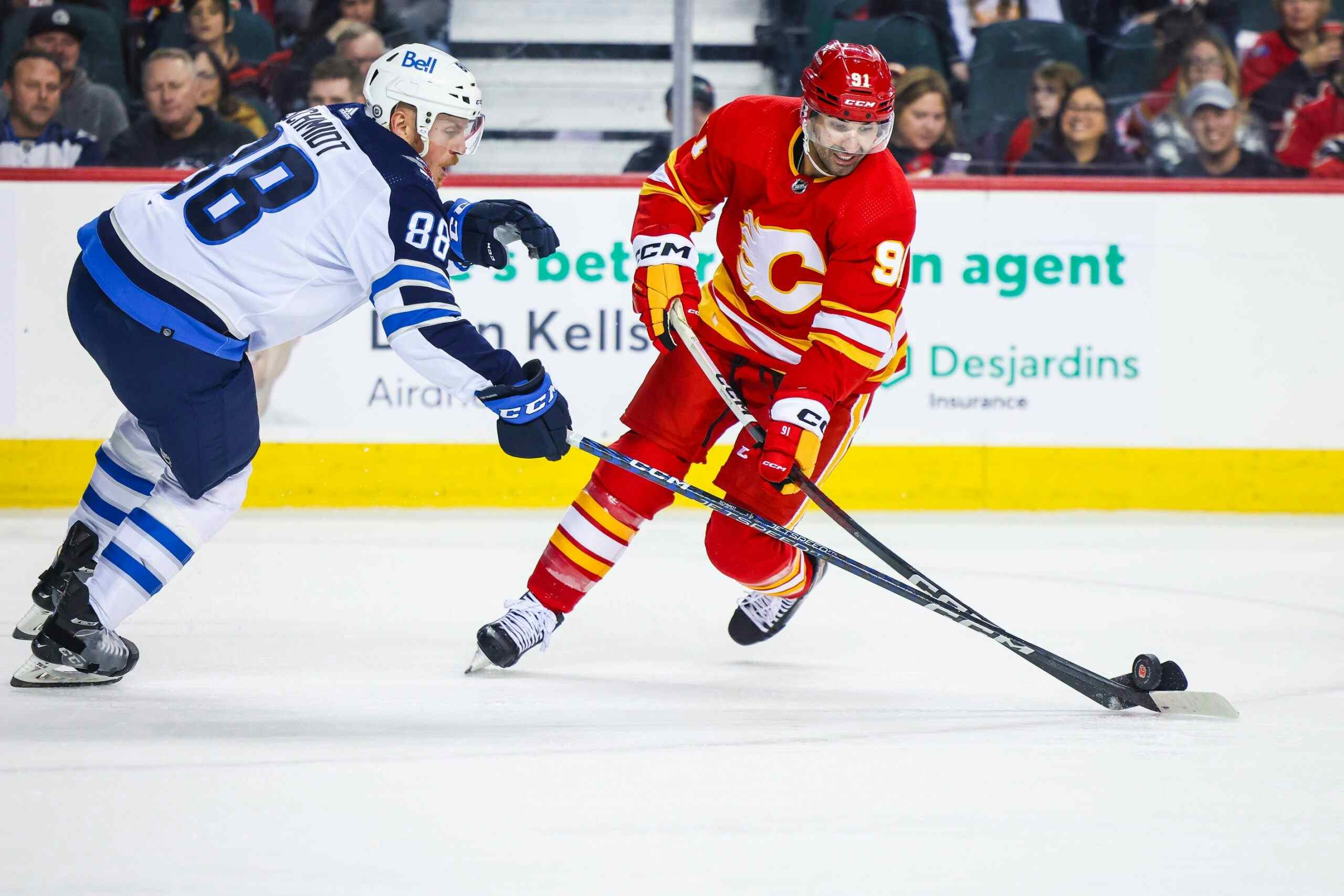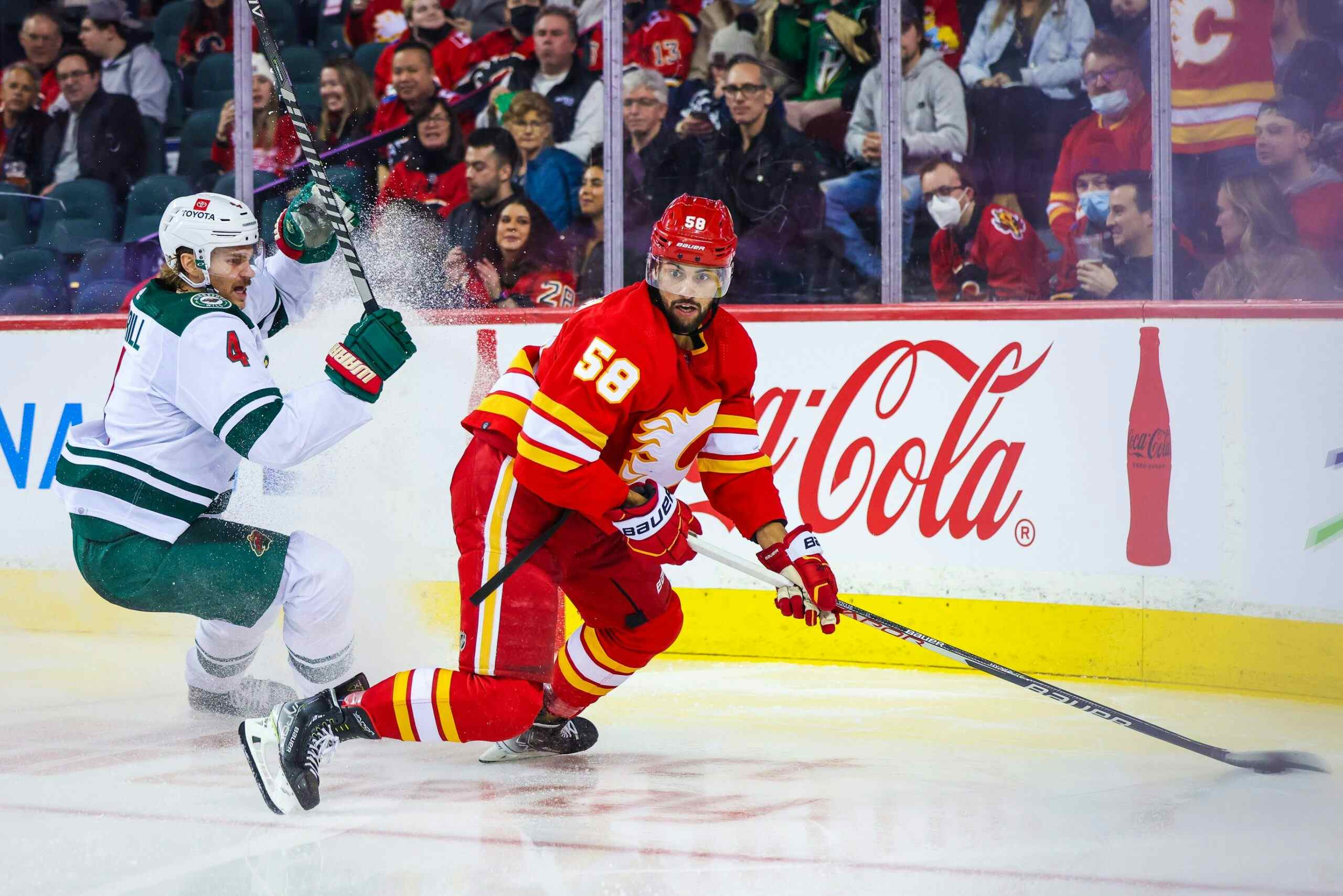Johnny Gaudreau and the likelihood of injury
By Byron Bader
7 years agoJohnny Gaudreau, the Flames’ emerging superstar, is currently locked in a negotiation with the Flames over his next contract. Many argue “he’s our best player and if he’s asking for $7 million or $8 million… he’s worth it. Pay the man.” However, others argue that he’s not worth that kind of money.
A central argument against him getting paid like other top flight young stars is that he is too small and is bound to get injured in the near future.
“He’s one bad slash away from never playing again.”
“His body won’t hold up over the years.”
Is this really a legitimate concern?
Gaudreau is small and doesn’t hit a lot. But he is also incredibly shifty and doesn’t get hit a lot. In fact, he’s never been seriously injured for more than a game or two in his entire hockey career. Not one serious injury. He’s played more games in the past two seasons than Sam Bennett and Nathan MacKinnon, and has missed fewer games due to injury through his career than Sean Monahan. And even if Connor McDavid plays the entire 2016-17 season, he will have played less than Gaudreau in his first two years. But he’s small… so an injury is just around the corner, right?
If we look at all the forwards selected in the past 35 years the average player (including anybody who played at least one game) has a career lasting approximately 240 games. Tall players (6’3” and taller) played an average of 236 games, average-sized players (5’11 – 6’2”) played an average of 252 games and short players (5’10 and smaller) played an average of 206 games. A small player, therefore, plays approximately 85% as many games as the average NHL forward.
Gaudreau is not an average NHL player though, he’s an elite offensive talent.
Gaudreau’s point-per-game pace thus far in his career is 0.89, and I expect that pace to slowly increase over the next decade. Let’s compare the same group of players as above, but pull out only the ones that recorded a point-per-game pace of 0.80 and above. Broken down this way, tall players averaged 1,044 games, average-sized players averaged 957 games and short players averaged 914 games.
So Gaudreau appears to be destined for a long, long productive NHL career… but he’s sure to get injured and his productivity will fall off a cliff in his late 20’s. Must be.

We’ve all seen a variety of the red line in the graph above: the production decline of the average NHLer. The player reaches his peak around 24-25 and slowly starts to decline into their early 30s, when most players’ careers end.
The blue graph above is the same age graph for the best elite short players of the past 35 years – which I trust Gaudreau will be one of when his career is done. Included in the list: Mark Recchi, Dino Cicarelli, Theo Fleury, Hakan Loob, Ray Whitney, Joe Mullen, Pat Verbeek, Marty St. Louis, Dale Hunter, Pat LaFontaine, Paul Kariya, Ray Ferraro, Cliff Ronning, Vyacheslav Kozlov, Saku Koivu, Pavel Bure, Steve Sullivan, Dave Gagner, Marc Savard, Danny Briere and Brett Hull. Mats Zuccarello and Tyler Johnson were not included because they haven’t played enough, like Gaudreau.
When we look at the short elite players’ age curve they don’t tend to hit their stride until their late 20’s (which makes sense because often make the NHL a few years later than their counterparts). Incredibly, their production remains high until their mid-30s as well (the average age that these players’ scoring starts to really fall off is 35).
CONCLUSION
Eric Lindros, the 6’4″ perfect hockey specimen, was ranked the 54th best player of all time by the time he was 25 years of age, and then a series of brutal concussions turned him into a shell of himself. Mario Lemieux, 6’4″ and maybe the best hockey hands we’ve ever seen, was one of the best players to ever play the game and was likely to rival Wayne Gretzky’s all-time point total record. At the age of 26 he missed his first significant portion of time with a significant back problem that would bother him throughout his career. This, along with bouts with cancer, kept him from registering the greatest career in NHL history. And Bo Jackson, one of the greatest athletes the world would ever know, who was also built like a fridge, at the age of 27, suffered a career-ending hip injury on a routine tackle on a running play. Never played football again.
Is it possible that Johnny takes a lethal slash and never plays again? Is it possible he gets a head shot like Marc Savard or Paul Kariya and never plays at the same level? Yes, it’s certainly possible, but injuries can happen to anybody at anytime. Small, average-size or tall. He’s an elite superstar and deserves the $7M+ contract. Banking on the notion he deserves less money because he’s bound to get injured has no empirical proof.
Recent articles from Byron Bader





